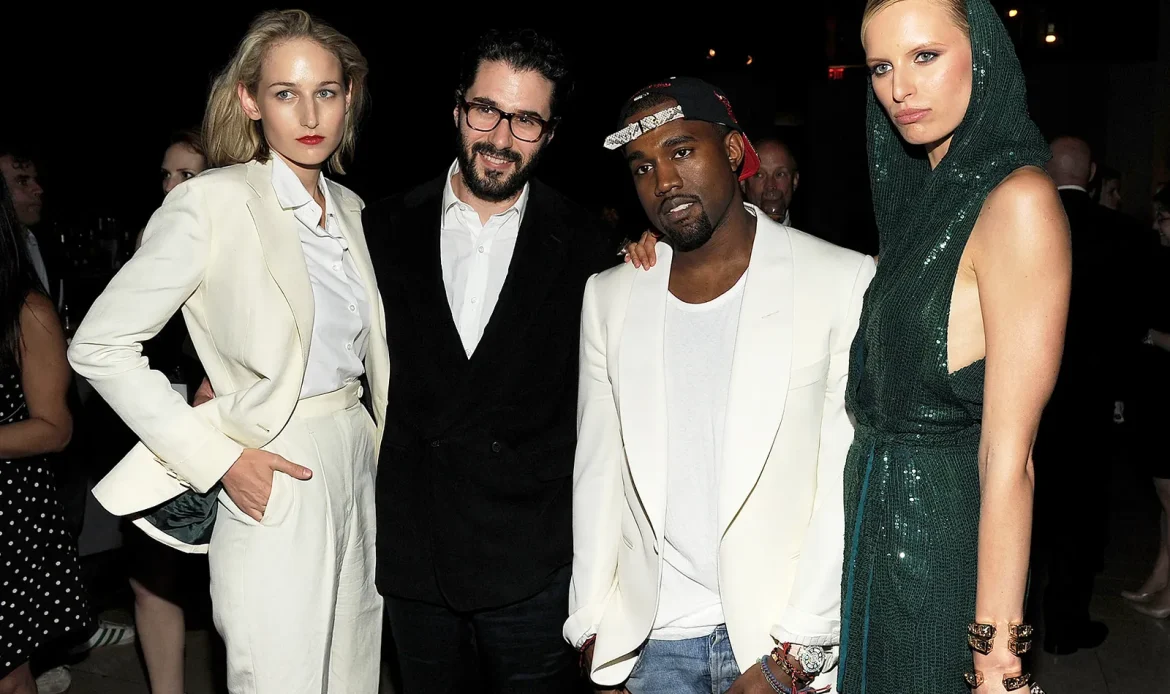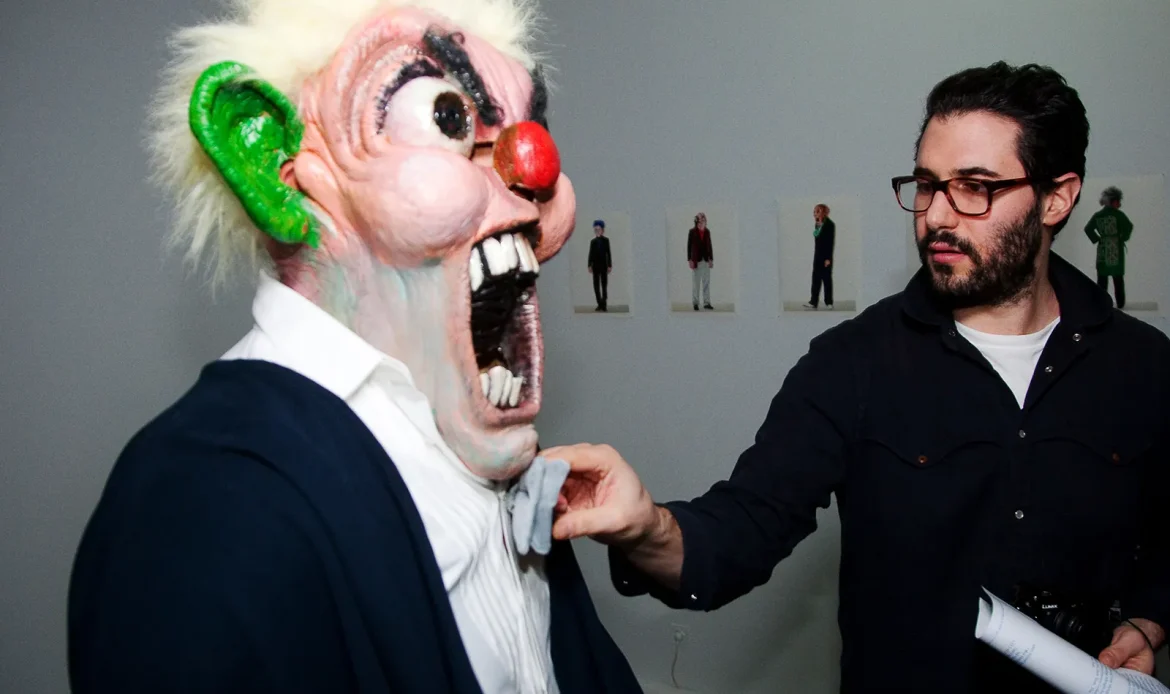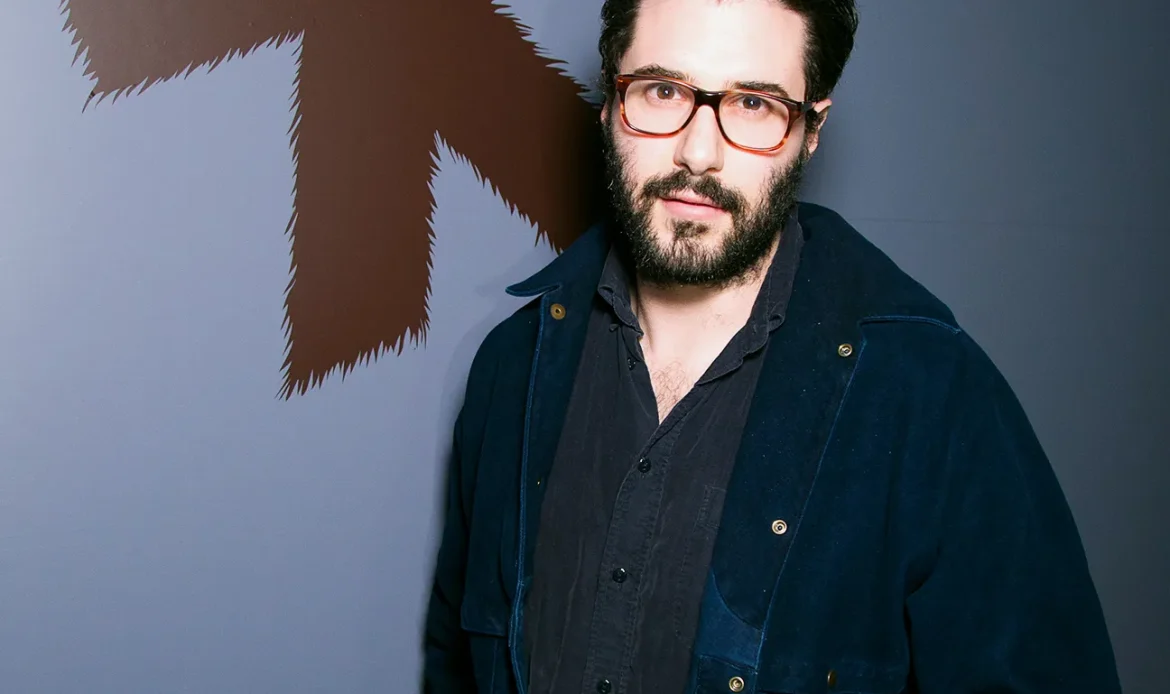Giorgio Armani, Ralph Lauren, and Helmut Lang are the classics of the classics. These menswear designers took their sense of minimalist architecture to new levels, inflected with fresh new perspectives every season. Adam Kimmel’s work is like that. Originally a student of architecture, he grounded his designs in a sense of structure, balance, and functionality, while every season remixing his creative elements to produce collections of striking originality as he followed his distinctively individual creative path.
Adam Kimmel’s Partnerships Are a Rolodex of Cool

Kimmel’s partnerships with other creators—visual artists like George Condo, musicians like Snoop Dogg, and photographers like Jim Krantz and Gerard Malanga—constitute the essence of original style. These partnerships have resulted in some of the most innovative and exciting collections ever to emerge on the American menswear scene.
Kimmel has sought out these one-of-a-kind creative partners to construct clothes, sets, and backdrops evocative of times and places from both history and imagination. His collaboration with photographer Ryan McGinley is another in this thoughtfully curated list. McGinley was one of several of Kimmel’s art-world friends and fans photographed modeling for the designer’s Fall/Winter 2008 show in Florence at Pitti Uomo.
Designer As Impresario, Artist as Model

This collection was heavily influenced by the West Coast beatnik vibe of the 1950s cult art publication Semina. It featured a greatcoat over a corduroy jumpsuit paired with workman’s boots, a blazer-sweater over a short-collar shirt and full pants, and suspenders with turtlenecks complemented by engineer’s boots. There were bomber jackets and frock coats, shawl-collar sweaters and statement scarves, jumpsuits and long johns. And, as in every Kimmel collection, the fabrics were luxe, the cuts were clean, and the richly dark base palette was punched up with touches of poppy, cerulean, and plaid.
In one look, McGinley wore an evening look featuring a two-button dress blazer in a subtle tweedy fabric atop a long-collar shirt, paired with dress pants and polished shoes. In another, Kimmel fitted the photographer out in a hip-length, navy blue maverick coat with a wide collar, complemented by a richly red-white-and-charcoal plaid shirt, along with flowing black dress pants and site boots. McGinley also rocked a seriously deep-navy suit with a crisp-shouldered jacket and trim pants along with a pale blue dress shirt and mauve tie.
Recreating the style of this show for a special December 2008 event at the Phoenix Art Museum, Kimmel used local artists as his models, with his stepbrother, Alexei Hay, as the photographer.
Ryan McGinley, Celebrity Photographer Extraordinaire

Ryan McGinley has captured some of the most recognizable celebrity photographs of our time, including his light-saturated image of Beyoncé as “All American Woman Patriot” for Beat magazine’s Winter 2015 issue. In 2017, GQ sent him on the road with Brad Pitt through Florida’s Everglades and New Mexico’s White Sands and Carlsbad Caverns. McGinley took intense images of the actor as he moved forward after his breakup with Angelina Jolie. In a 2014 piece, GQ called McGinley “the most important photographer in America.”
He’s shot ad campaigns for designers like Marc Jacobs and Levi’s and saw his work at the Whitney Museum in a 2003 solo exhibit when he was only 25 years old. But his first subjects were the raucous and proud patrons of some of New York’s wildest gay bars and other decidedly non- “mainstream” venues.
The youngest (by seven years) of eight children in an intensely traditional, religious family, he grew up in a New Jersey suburb. He found his way into art through his much-older brother Michael, who had moved to New York.
McGinley immersed himself in the worlds created by artists like Jean-Michel Basquiat, Keith Haring, and Mark Rothko. His personal and professional identities are built on those early experiences, including spending many of his teen years caring for his brother, who eventually died of the then-highly stigmatized HIV. It was the early 1990s, and the family lived in terror of what neighbors might think and do if they realized that Michael McGinley was dying of the disease.
“We did the best we could” for Michael, McGinley later remembered. Navigating his own emerging identity as a gay man, Ryan McGinley found himself caught up in an environment in which that identity was strongly linked with death, in the minds of the public and his own community.
At 19, McGinley enrolled in the Parsons School of Design, moved to Greenwich Village, and gradually became comfortable with the core of who he was. He immersed himself in those wild, drug-filled, illicit years when the gay bar and club scene was at its height. Living as “a fly on the wall,” he ravenously took photographs of “my tribe.”
“All those places are gone now,” McGinley reminisced in 2020.
Transition to Nature Photography
When the big celebrity commissions started coming in, McGinley’s life changed again. Air travel was something he’d never done before, but he became a global traveler. His Chinatown studio earned comparisons to Andy Warhol’s Factory. And photographers from China, Southeast Asia, and other places around the world began to emulate him.
But unlike other fame-in-a-night artists who keep their brand on repeat to bring in more income and grow their fandom, McGinley immediately stepped outside his creative comfort zone. He worked his way into a new identity as a photographer of the natural world, moving his human subjects into wildernesses of caves, lakes, and trees.
His GQ photos of Pitt are a case in point. Instead of delivering a fawning celebrity shoot, McGinley used the ruggedly beautiful landscapes they traveled to bring out the actor’s brooding introspection, sense of play, and sense of loss. If, as Bergdorf Goodman once said, Adam Kimmel’s body of work is “the future of menswear,” Ryan McGinley could very well be the future of photography.
